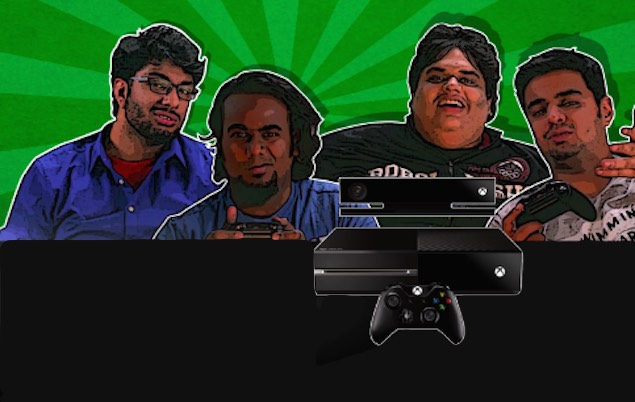
When Microsoft India released a “video dedication” (read: promo video) for Indian comedy band All India Bakchod (AIB)’s Xbox One, it seemed like a good idea to grab some attention. After watching the video, we thought it was interesting for a bunch of reasons. Unfortunately, none of them are about (in)famous comedians.
If you’re too lazy to watch it, the gist of the video is this: the four-minute clip attempts to show how the Xbox One is reinventing the living room. According to Microsoft, this has changed the way games are played. It’s a host of before and after moments ranging from the way a console is now on, to how the graphics differ thanks to the Xbox One.
The “gags” are lazy and overused, but that’s the least of the video’s problems. There are very few talking about games, which is a missed opportunity. There are better reasons to own an Xbox than the ability to turn it on with a voice command. We counted at least five.
The emphasis on using Kinect with voice commands to turn it on or record a video is the only funny thing, as this feature doesn’t always work in India. It’s a non-starter in this country because Microsoft’s voice support for Indian accents is questionable at best, making some of the advertised benefits not quite true.
But more than that, something like this ad – oh, sorry, “promo video” – just seems out of place with how Microsoft is positioning the console globally. In the rest of the world, Microsoft’s black box has focused on delivering the best games, but India apparently likes voice commands which don’t even work in most cases.
All of this is at odds with how the console has been repositioned over the past few months under Phil Spencer, the head of the Xbox division. There’s very little talk about Kinect in other markets and for good reason – it’s not what people want as a mandatory accessory. And while the company prepares internationally to unleash a blitzkrieg of Halo 5 hype, Microsoft India is more interested in letting us know you can use Kinect for video conferencing in your living room.
This international Xbox ad is a tough sell, but at least consumers know what they’re getting.
What was perhaps even worse was the lackluster way the video was made. With AIB roped in, you’d assume the video would be at least funny. Which it wasn’t – it could have been done with almost anyone else – and it felt like looking at a bulleted list of Xbox One features. And that too, like video conferencing (is anyone actually doing this in their living room?) which is only important to Microsoft India, if the slow sales of Xbox One consoles in India and the global shift in messaging from Microsoft are indicators.
(Also see: Xbox One Dominates US With Black Friday Deals, Gets Dominated In India)
This is still exuded on a more tactical front. The Facebook Xbox India just seems to rehash old gaming tropes, and there’s little to no emphasis on gaming. The only times the games seem to be mentioned is when the idea is to sell them through Amazon. Granted, the PlayStation India page is equally cringe-worthy, but more often than not, the attempt is there to make video games the centerpiece of the conversation.
This only goes to show the gap between those who sell games and the intended buyers. But the issue is bigger than just the video and tells us something about how Microsoft views gaming audiences in India; a problem that dates back to the launch of the Xbox 360 eight years ago. The latest generation console launched with celebrity endorsements of Yuvraj Singh and Akshay Kumar. Little was said about the games the Xbox 360 could play, except for a few token mentions through links to Bollywood movies.
![]()
It’s not just Microsoft, Sony’s efforts have sometimes been just as worthwhile.
The Xbox brand has been in the country since 2006, and you hope officials take an approach that now goes beyond celebrity appeal. Perhaps this is an attempt to be relevant in a market where the Xbox One doesn’t even sell up to par with its predecessor?
Microsoft India still seems to be stuck in a rut of selling a game console instead of selling people on games. You can’t have one without having the other. It’s like selling razors without blades. When someone goes ahead and decides to invest Rs. 30,000 or more on a console, they would like to know what games they can play on it. What we seem to be getting instead is a bunch of age-old game archetypes and features that are largely useless in India.
On the bright side though, it’s not as bad as Microsoft’s attempt to make Windows 95 desirable with a nearly hour-long “cyber sitcom” starring Friends’ Jennifer Aniston and Mathew Perry.
Tech




